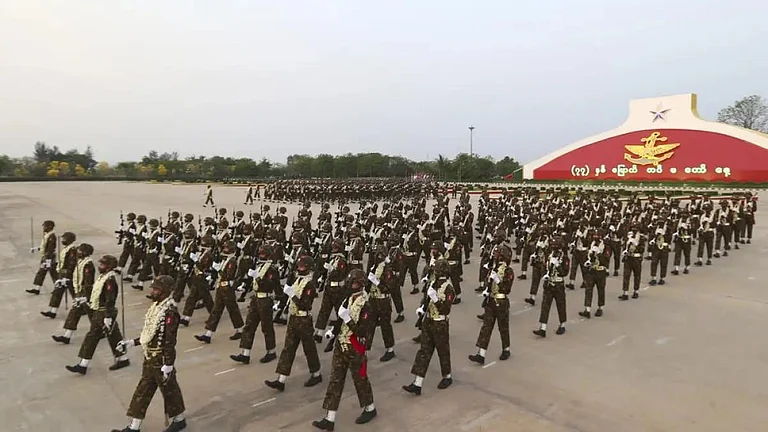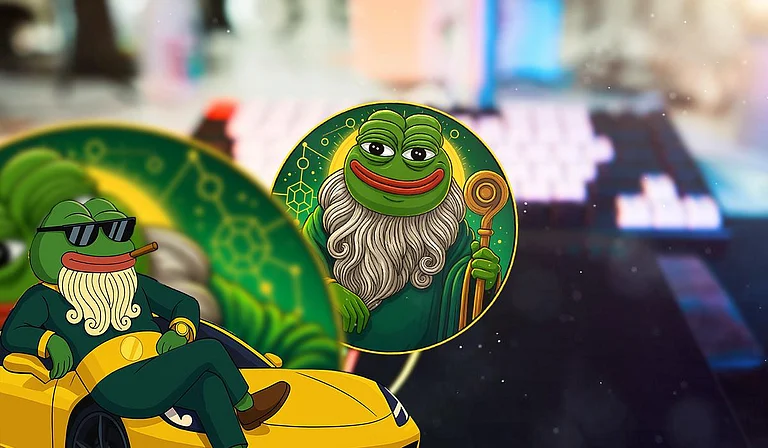Few countries match the space the United States occupies in the political discourse of other nations. Irrespective of whether its domineering presence and penchant for interference in others’ sovereign policies is suffered or loathed, no country can ignore the US. As a Chinese commentator aptly puts, irrespective of one’s geographical position, America is everybody’s neighbour.
It’s a pertinent observation in the present context, when a debate is on in the Indian foreign policy establishment on the future trajectory of India-US ties.
As policy planners search for answers on how to deal with an America exceedingly becoming abrasive under the Trump presidency, many are asking if it is time for India to find reasons to justify why it needs constructive and cordial relations with the US.
“The US under President Trump has become a very difficult and unpredictable interlocutor. Almost mercurial,” opines Commodore (retd) C. Uday Bhaskar, director, Society for Policy Studies in New Delhi. He points out that traditional US allies like Germany, Japan and South Korea have all suffered similarly since Trump came to power. “In almost all its bilateral ties, the US brings a huge index of asymmetry in its favour and seeks a basketball-like end to negotiations—relatively short with defined objectives and a definitive outcome. This is not in the Indian DNA,” he adds.
India and the US have traded charges on a number of areas where their competing interests have clashed, ranging from trade, defence and security to energy and technology. Bilateral relations are also strained as the US intrudes into India’s domestic affairs, raising questions about religious freedom and minority rights.
“As the most powerful country, confident that its values are universal and should be the norm for the rest, with the belief it has the moral right to shape the world according to its interests, if necessary through military means, the US has become very difficult to deal with,” states former Indian foreign secretary Kanwal Sibal.
He says issues like human rights, democracy and religious freedom are often used by the US as tools of pressure, disregarding its own infirmities on those same points. Further, the US often negotiates international treaties which it may not eventually sign or ratify or, if found necessary, can walk out from. The US’s political system also complicates ties, as the US Congress and individual senators moved by domestic lobbies often interfere in the conduct of foreign policy.

Ties with Iran vis-a-vis tension in the Persian Gulf.
“As the pre-eminent global power with military alliances and bases all over the world and many countries dependent on it for security, the US is unable to enter into an equal relationship with any partner,” says Sibal. He points out that the US control of the international financial system and the fact that the US dollar is the primary reserve currency gives it enormous power, enabling it to impose sanctions on others. The extra-territorial application of the US law, says Sibal, is a problem for its allies. “The size of the US market and access to its financial system is a powerful incentive for other countries to bend to its often unreasonable demands,” he adds.
But Navtej Sarna, who till recently served as India’s ambassador to the US, argues that the partnership under the current administration has been strong and collaborative in the strategic sphere, defence, security, counter-terrorism etc. India is now the US’s major defence partner, he says, and there has been increasing inter-operability between the two defence forces. Sarna, though, admits the “routine and minor” differences on trade and economic issues. “Given the Trump administration’s trade orientation, these get a higher profile than usual,” he adds.
However, other commentators feel that because the US looms large on the horizon of most countries it becomes the whipping boy for political opposition. “World politics is a game of ruthless calculation of self-interest,” says C. Raja Mohan, director, Institute of South Asian Studies at the National University of Singapore. He points out that India’s relative weight in the international system has significantly increased in the last three decades. “India is on its way to becoming the third largest economy, but we continue to think ourselves as a weak third-world country; we frame every difference with the US as a pressure point,” he says.
He argues that India’s experience of dealing with the US tells it that New Delhi can negotiate its differences with Washington and find beneficial compromises. “No country, big or small, is an easy partner. All relationships, even the closest ones, have to be tended to,” says Raja Mohan.
According to him, the challenge is the continuous harmonisation of interests among states. Each country has its own specific structures and distinctive diplomatic style that must be factored in our diplomacy. Since the end of the Cold War there has been greater convergence of interests between New Delhi and Washington and a significant expansion of the partnership. That does not mean India can take the US for granted. “Currently, the US is going through major domestic convulsions, leading to major changes in economic and foreign policy. Delhi has to be mindful of those changes,” he adds.
Raja Mohan also goes on to compare the different yardsticks Indian policy planners adopt in dealing with the US and China, both important in India’s foreign policy agenda. Talking about the critical view India regularly adopts in dealing with the US while being much more flexible to problems posed by Beijing, he says, “Delhi has a huge boundary dispute with Beijing and a massive trade deficit; Beijing blocks Delhi in Nuclear Suppliers’ Group (NSG) and other multilateral fora; Beijing uses Rawalpindi to balance Delhi; China protects Pakistan against international actions directed at Pakistani army’s support for cross-border terror. Yet we sit down with China in RIC and BRICS and downplay the differences.”
As he points out, India, however, is far more critical of the US, despite the fact that the US is India’s largest trading partner (India has a trade surplus with the US, unlike with China); it has helped India to break out of its nuclear isolation and is also a partner in counter-terrorism. “That cultural legacy is unlikely to go away. The temptation to present the US as a bigger problem than China is part of our political legacy,” he says. Raja Mohan argues that another way of putting it is this: India pretends to be friends with China and tries to push problems under the carpet; it also pretends Washington is an adversary and is in an unending public argument with the US.
But strategic thinker and historian Srinath Raghavan looks at these developments quite differently. “Instead of thinking of the US as a difficult or easy partner, it is useful to think of the structural reasons why the relationship periodically enters into phases of difficulty,” says Raghavan. According to him, this is because there is an asymmetry (not necessarily conflict) of interests between the two. The US is a global power with global interests, while India remains a regional player with restricted sets of interests. “You can see this dynamic in play, for INStance, on Iran. US priorities and perceptions do not coincide with those of India’s,” he says, pointing out that “this still leaves considerable room for areas where both sides’ interests have convergence, but it is unlikely that they will see eye-to-eye on many important developments.”

Purchase of the Russian S-400 are issues that US and India are resolving.
Soon after Independence, India had begun its engagement with the US when Jawaharlal Nehru visited the country in 1949 and held discussions with the American leadership. However, with the advent of the Cold War, India’s active support for the Non-Aligned Movement found it moving closer to the Soviet Union to counter the growing Pakistan-US ties. After the collapse of the USSR in 1991 the threads were again picked up for a serious engagement, but that happened only after India’s May 1998 nuclear tests that brought President Bill Clinton on a five-day visit to the country in 2000, setting the stage for an upswing in relations. A massive boost to close ties happened under George W. Bush when he personally got involved in breaking India’s decade-long nuclear isolation with the India-US nuclear deal. Subsequent US presidents took ties forward, goaded constantly by an increasingly bipartisan support in the US Congress for strong relations with this booming economy and emerging global player.
“India and the US have both to gain from each other from a strong partnership, that is why India has found a prominent place in the national security strategy and the Indo-Pacific vision of the US,” says Sarna. The US is a leader in technology, defence, civil R&D, education, science, space etc and India has gained significantly through its close partnership with the US in these areas. “They see us as a huge democracy with a commonality in worldview, a rising economy, a large market and partner for third country projects,” adds Sarna.
Indeed, various strata of India-US ties are impressive and thickening in importance. Among individual countries, the US is now India’s largest economic partner, with trade in goods and services reaching over $142 billion. Its importance as a source of investment and technology cannot be understated. It is, crucially, the biggest market for India’s IT sector. The number of dialogues that the two sides have surpasses that which India has with any other. Over the past decade, defence ties with the US have also grown rapidly, with acquisitions valued at over $17 billion. In addition, there are over 1,30,000 Indian students studying in various US colleges and universities. The nearly four million-strong Indian diaspora in the US not only contributes significantly to the American economy, but have started playing an important role in the political arena. “The dimensions of our relationship with the US are bigger than with any other country; Indians now thinks positively about the US,” says Sibal.
But what does the US bring to the table that often leads India to eat ‘humble pie’ and seek out Washington’s support?
“The US is the global hegemon: first among juridical equals in the international system and the country whose concurrence is usually indispensable to sustained global action,” points out Raghavan. Therefore, he says, it is hardly surprising that a rising power like India will want to leverage its relationship with the US to advance a range of goals. “No other state in the current international order can do this,” he adds.
While all other incidental benefits of close ties with the US cannot be ignored, MEA officials and former diplomats acknowledge that Washington’s biggest and most significant role is in how other important countries deal with you. Be it China, Russia, leading EU nations or US’s Asian allies, the importance of India to them has grown significantly because of India’s strong relationship with the US.
According to Raghavan, the US is a key player in enabling that India provides an effective balance against China—not in straightforward military comparison, but in ensuring that China’s rapid and expanding radius of interests doesn’t destabilise Asia. US allies in Asia are also important for the same reason.
Raja Mohan agrees and takes this view further: “A good relationship with the US enhances India’s leverage with all the interlocutors. A bad relationship limits India’s space for manoueuvre,” he says. “This is precisely why Moscow and Beijing see managing ties with the US as their number one foreign policy priority.”
But the US’s pre-eminence in global affairs notwithstanding, will it be wise for India to devote an inordinate amount of energy on its relations with the US with the relative exclusion of others?
Experts say the art of diplomacy lies in hedging one’s bet and in expanding options for more strategic space to manoeuvre in. “We have several important ties and we cannot afford to spoil any because of the other,” says Sarna.
Most others agree. “The challenge for India, an abiding one since P.V. Narasimha Rao’s years, is to maintain a sustainable equipoise in its relationship with the US, Russia, China and Japan concurrently,” says Bhaskar.
In an uncertain world where most countries keep their options open, India will have to bring to bear all its diplomatic skills to ensure steadily improving ties with Washington while maintaining excellent ties with other global players.
If it achieves that diplomatic/strategic tightrope walk, New Delhi will continue to be a sought-after player at the global arena. To infuse this balance within the pursuit of a sovereign foreign policy, using its own prism to evaluate regional and global developments, will extract the highest profit for India.

























